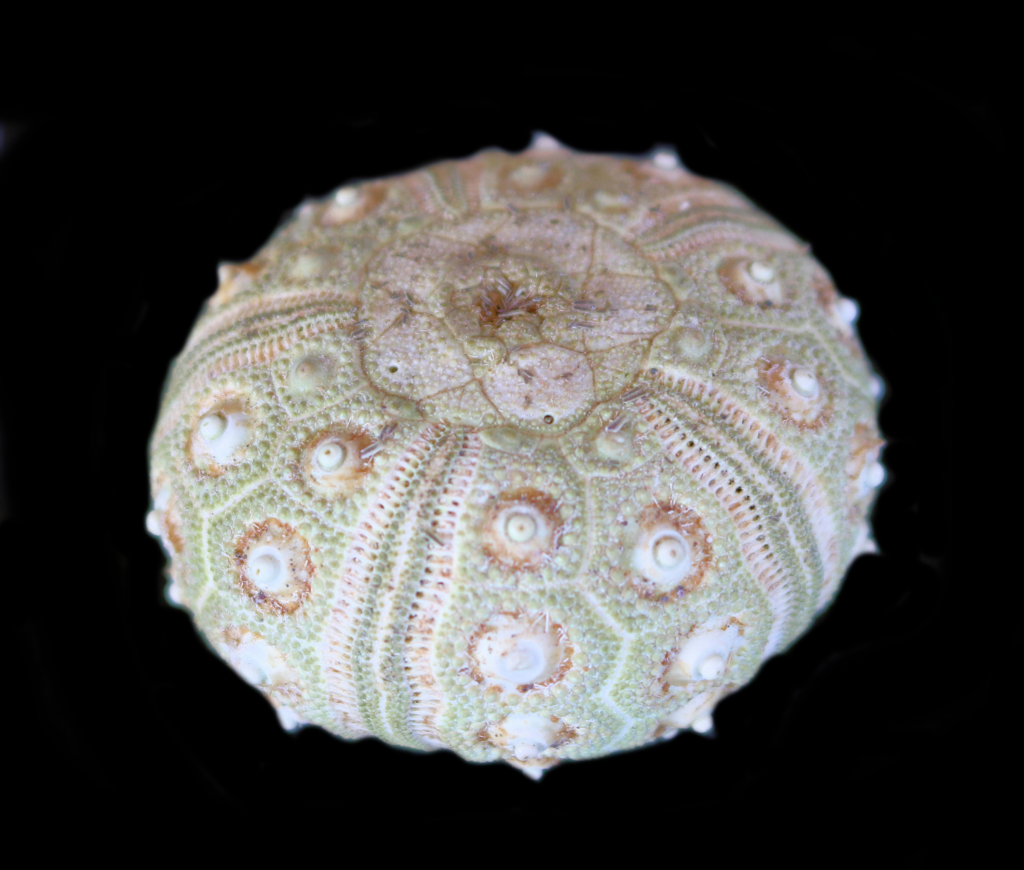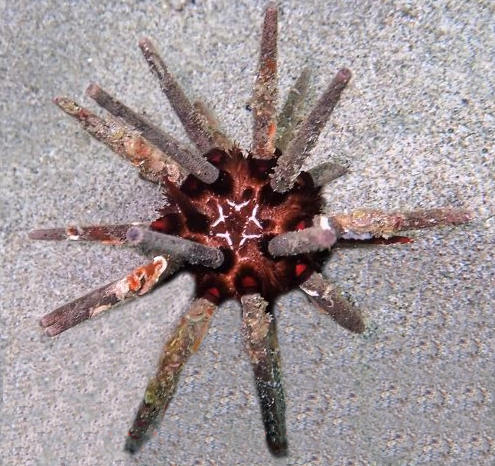Cidaridae Family of Pencil Urchins
Phylogeny: The Pencil Urchins are a member of the Cidaridae Family. Like Starfish and Sea Cucumbers they belong to the Phylum Echinodermata. The Family is comprised of four subfamilies and one Tribe. They are in the Class Echinodea and the Order Cidaroida. The Cidaroida Order is the most primitive of the Sea Urchin Orders.
Distribution: Pencil Urchins are found worldwide in tropical and semitropical seas, as-well-as in Antarctica. The Cidaridae Family has one hundred eight species of which four are found along Mexico’s Pacific Coast. Pencil Urchins are found in crevasses on rock or coral, or on sand or mud. They range in depth from the intertidal zone to depths over 3,000 m (9,840 feet). They are found only in marine environments.
Morphology: Cidaridae have stout tests that are composed of 20 columns of overlapping plates (ossicles). The test is disk shaped for irregular urchins (sand dollars), and globular for regular urchins (sea urchins). They lack the arms of sea stars, but are covered by movable spines with the spines being more widely spaced than their Sea Urchin cousins. The primary tubercles are perforate, not crenulate. The spines may be conical, thorn-like, or club shaped. are characterized by a larval stage with bilateral symmetry and an adult stage with 5-rayed radial symmetry. They are unsegmented and can be cucumber, disc, sphere or star in shape. They have a water vascular system, tube feet, and a complete digestive system, but they lack a head, eyes, nervous system, or excretory system. There are tiny pincers (pedicellariae) located between the spines. Their mouth is located on the flat, or concave, underside. Inside the mouth is a complex chewing apparatus, made of 5 jaws, that is known as an Aristotle’s Lantern. They move by the use of tube feet and by moving their spines. The largest Pencil Urchins have an overall diameter of 30 cm (12 inches).
Ecosystem Roles: The Cidaridae are omnivores, feeding on bryozoans, detritus, foraminifera, sea grass, and sponges. Cidarids are thought to follow an annual sexual reproductive cycle with external fertilization. Some species brood their young.


